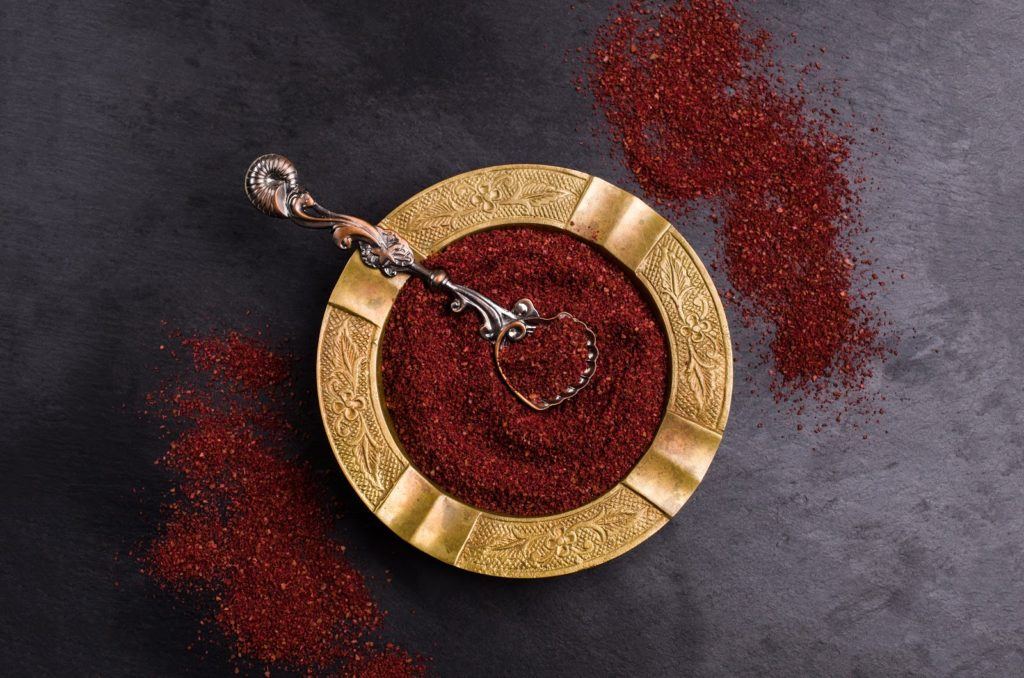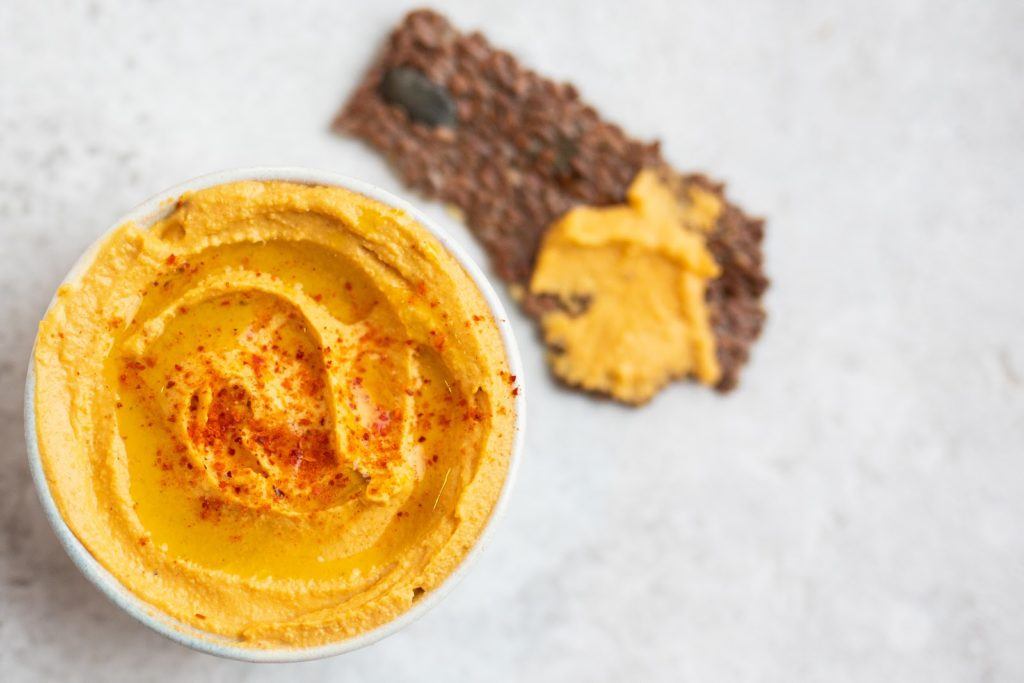A Food Fun Travel Guest Post
What is Sumac?
Sumac (Rhus coriara), also written as Sumach or Sumaq, is a kind of red berry of the cashew family, that has been turned into a favorite spice in many types of food. However, it should not be mistaken for its poisonous relatives under the same genus Rhus. The spice Sumac bush is a famous condiment in Arabic countries, usually used in exchange for lemon for its sour qualities. The dried red berries are crushed into a purple-red powder and are commonly seasoned into salad dressing; a favorite mix to onion salad, as well as marinade to meat, and a flavoring for kebabs.

Origin
Sumac is usually grown in Sicily, Italy, and other Mediterranean areas, as well as in Middle East countries, most notably in Iran. However, it is also being cultivated in temperate areas where the spice has become a staple.
Flavor Profile
Sumac is associated with the Tamarind flavor. It has a sour and astringent taste but has a fruity, lemony touch as well. This makes it the favored spice for dishes that want a tarty finish to it. However, unlike tamarind, it has a bit of spiciness to it. In fact, it was a more common spice in the European region before the introduction of lemon.
Cooking with Sumac
In Arabic cuisines, appetizers such as Tashi and Hummus are favorably garnished with Sumac powder. This adds color to the dishes as well as provides the spiciness. Also, for most of the middle eastern countries like Armenia, Azerbaijan, Pakistan and of course, Iran, where the bushes are commonly found, people like to include it as the final touch to rice or kebab.

It is a favorite ingredient to salads like Fattoush salad, as a source of tanginess. It is also a favorite marinade for all kinds of meat, especially lamb, chicken, and fish. For Pakistan, they have Musakhan as a favorite dish where Sumac is not just a spice, but an actual, main ingredient.
Overall, the main role of ground Sumac is to be sprinkled on top before serving – providing color and taste texture to every meal it is incorporated into.
Sumac is of great nutritional value. According to its Recommended Dietary Allowance chart (RDA), 1 Tsp of this spice, or 2.7g, contains 16% Vitamin A, 2.6% Iron, and 0.7% Calcium. It has a calorie count of 7.6kcal. It is Fat-free, Cholesterol-free, and Sugar-free.
Health Benefits
The Sumac bush prides in plenty of health benefits too. It is a great aid to diet and healthy living and even does wonders for lactating women. Here are some of its known health benefits:
Cholesterol regulator. Studies have shown how the spice helps in regulating cholesterol levels in the body, and even prevents and treats diabetes due to its capacity to reduce blood sugar, as it is a sugar-free ingredient.
Diuretic properties. As natives have been known to use Sumac to treat urine infections and digestive problems, studies further discovered that it is a diuretic and has the ability to help the body eliminate toxins through urine.
Fights colds and flu. Sumac is found to have anti-inflammatory properties and since inflammation is a problem that is highly associated with common diseases like cold and flu, the spice became an effective tool to combat the said disease, among others.
Anti-cancer. With such a high Vitamin C content, the spice is able to serve as a great anti-oxidant. This means it helps in warding off major cardio diseases and even cancer.
Anti-fungal & Anti-microbial. In line with its anti-inflammatory properties, it is also a great way to treat inflammations on the skin, as well as other microbial and fungal skin infections. In fact, studies show that it can also fight off Salmonella. In addition to its anti-microbial properties, some people have the habit of mixing Sumac in water to cleanse and disinfect fruits and vegetables.
A woman’s friend. Sumac is known to help lactating mothers, as it is a favorable means to assist in breast milk production. Plus, it also helps minimize the occurrence, and/or ease menstrual cramps.
Ease bowel movement. People in the middle east use Sumac to relieve upset stomachs and fever. It also becomes a must in easing bowel movement.
Proper Care and Storage
Whether the Sumac you have is still in its dried form or already grounded, the best way to store it is through keeping it inside a tight jar, and stored in room temperature, away from light and air. With proper care of this spice, you can sprinkle it on food, marinate it on meat, mix it in hot water before pouring into whatever you are cooking, and you can be sure that it will be able to provide the taste that it has been discovered for.




